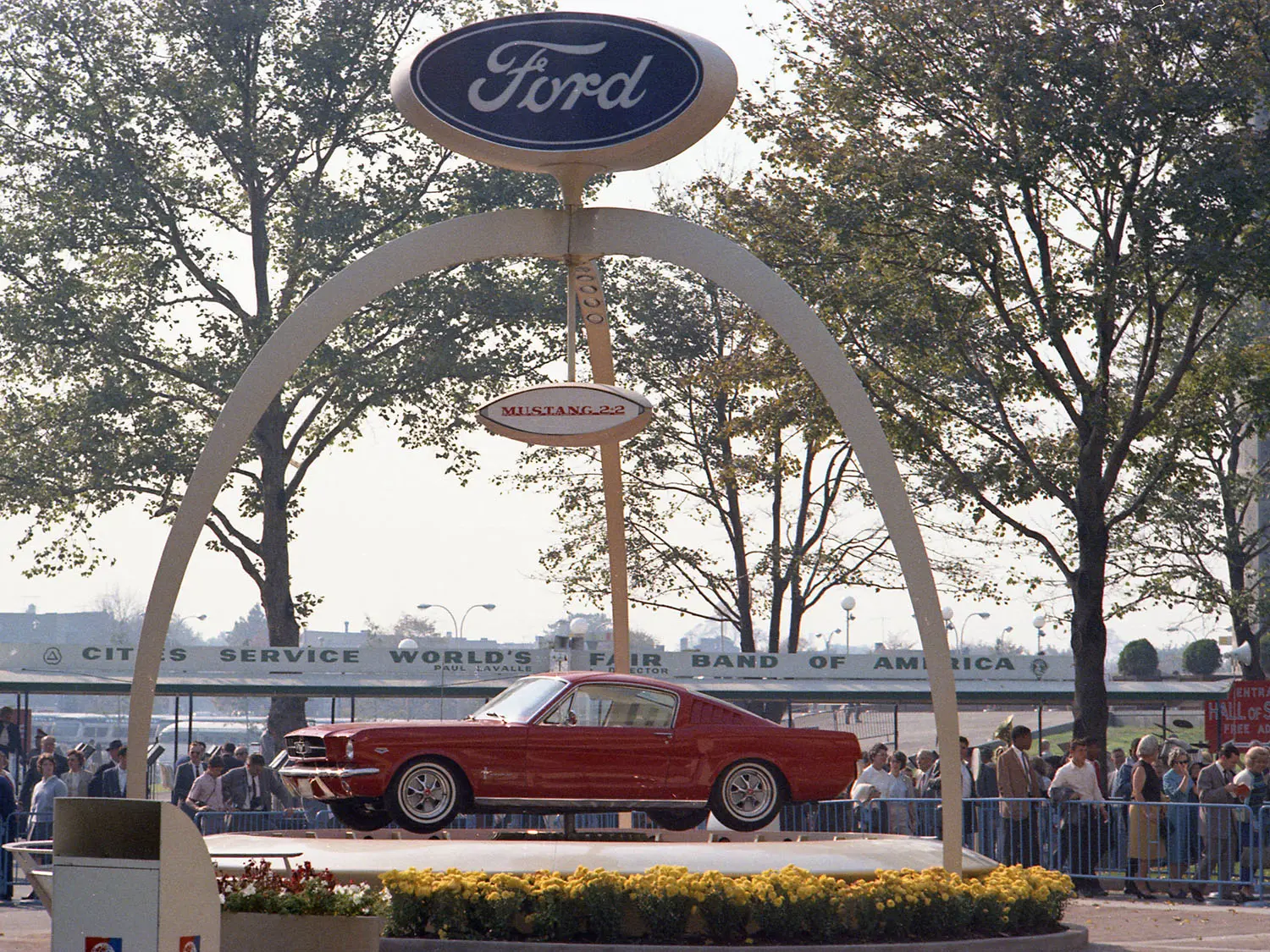THE FORD MUSTANG AT 60
14 March 2024
The date is the 13th April 1964, and the venue is the Ford Pavilion at New York World’s Fair. The assembled media representatives have gathered to hear the company’s Vice President, Lee Iacocca, introduce a car that would appeal to the affluent younger driver. “People in every state, from as far away as England, Malta and Australia, have written to ask for more information about the car, and many were ready to order it sight unseen!” He also stated:
This is the car we have designed with young America in mind – for, frankly, we are very much interested in serving young America. By next year 40 percent of the total U.S. population will be under 20 years of age, and the 16 to 24 age group is growing faster than any other segment. This latter group is made up of high school and college students, young married couples, and young working men and women.

Photo credit: Ford Newsroom Mustang Heritage | Ford Media Center
On the 16th April, the day before official sales commenced, all three of the USA’s television networks screened Mustang commercials. Ford sold over a million examples in 18 months and arranged for a convertible to appear in Goldfinger.
The narrative arguably commences in 1961 when Chevrolet’s compact sporting offering, the Corvair Monza, attracted much attention, not least from Ford. Their rival Falcon Futura launched that same year, but it did not have the same appeal to the young motorist. In November, Ford initiated the T-5, a “small, four-passenger, performance-oriented, sports vehicle” with the criteria of being no more than 15 feet long, weighing no more than 2,500 pounds, and costing under $2,500.
To ensure the last element, the T-5 used as many existing parts of the Falcon as possible; the development programme was known as “Special Falcon”. Crucially, the styling bore no resemblance to the parent model – a lesson Ford would later apply to the Capri Mk. I, which looked entirely different from the Cortina Mk. II. Senior management decreed that T-5 should be “demure enough for churchgoing, racy enough for the dragstrip, modish enough for the country club.”
And the timing of the Mustang’s launch was perfect. The historian David Halberstam points out that 1964 “would prove to be the highwater mark of the American century, when the country was rich, the dollar was strong, and inflation was low. In the middle class even the young had money”. And your friendly local Ford dealer would be happy to demonstrate how to invest those dollars in a new Mustang.
In addition, Ford, after the debacle of their short-lived Edsel marque, had come to realise their future needed to be in developing new markets rather than follow General Motors with their elaborate hierarchy of badges. The Mustang resulted from this philosophy, but had the fates been kinder; it might have worn the Edsel name.
The low price was intended to tempt owners of ‘sporting’ machinery from General Motors and Chrysler. The former offered, in addition to the Corvair Monza, the Buick Special, Oldsmobile F-85, and Pontiac Tempest. The latter produced the Valiant Signet, Lancer GT, and Barracuda. But the Mustang was not only elegant; it could be yours for $2,368 - a price that would also appeal to would-be owners of imported two-seaters.
Of course, such a sum bought you little in the way of equipment on the basic 2.8-litre model with three-speed transmission. However, a choice of 70 options could enhance your Mustang. You could specify a convertible or hardtop coupe and a standard or deluxe interior. For the would-be Dan Gurney, there were the 4.3-litre ‘Windsor’ or 4.9-litre V8 engines, which could also be ordered with power-assisted brakes and a limited strip differential.
The fact that a clock, rev counter, padded sun visors, and reversing lamps were on the “extras” list demonstrated Ford’s keenness for the Mustang to seem as accessible as possible to the young motorist. For the 1965 model year, the company offered 3.3-litre six-cylinder or 4.7-litre V8 engines and a very appealing Fastback.
The basic Mustang’s price was equivalent to around £850 in the UK, while a Cortina GT four-door cost £851. Ford USA believed 60% of owners were aged 34, college graduates and earning just under £3,000 per year. Across the Atlantic, import duties meant the British-market versions sold by Lincoln Cars Ltd. of Brentford appealed more to successful beat combos and business magnates.
When Autocar tested a LHD 4.7-litre Convertible in 1964, the price was £1,925 – more than £800 more than an Austin-Healey 3000 Mk. II and £95 more than a Jaguar E-Type Roadster. But they concluded, “For those who want a car of outstanding performance, the Mustang is one which is certainly different”. And in the USA, who would not want to immediately order a Rangoon Red Hardtop or a Wimbledon White Convertible immediately after seeing this advertisement?
